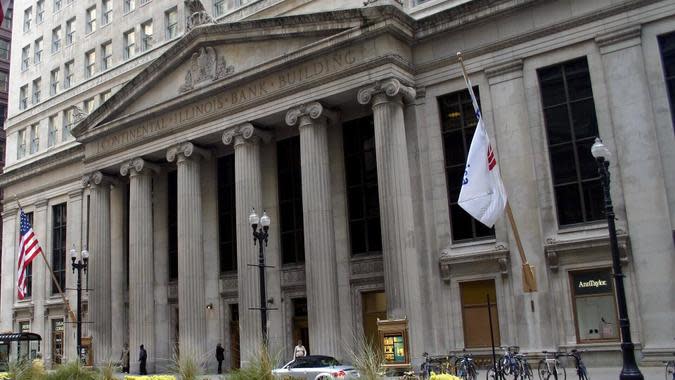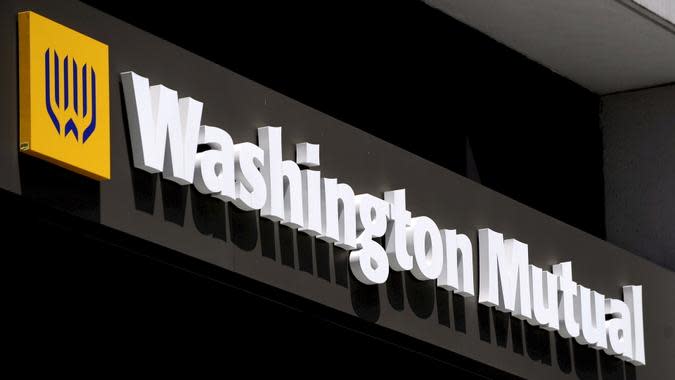The 15 Biggest Bank Failures in US History

Most bank failures don't make front-page news, so many people don't know how often they happen. Recently, however, the second-biggest bank failure in American history dominated headlines as Silicon Valley Bank (SVB) was placed into receivership on March 10, 2023. This failure was then followed by the closure of Signature Bank on March 12.
See: Top 6 Richest People in the World You've Never Heard of
Learn: How To Guard Your Wealth From a Potential Banking Crisis With Gold
During tougher economic times, the number of failures tends to increase substantially. For example, in 2009 and 2010, at the height of the housing crisis, almost 200 banks closed.
Read on to learn about the 15 largest U.S. bank failures. Many of these banks failed as part of the worst market meltdowns in the past 50 years.

15. AmTrust Bank
Assets: ~$12 billion.
Failure date: Dec. 4, 2009.
AmTrust Bank was closed by regulators in December 2009 and about three-fourths of its assets were sold to New York Community Bank, which took over its 66 branch locations. The FDIC took a loss of approximately $2 billion on the sale. AmTrust had too many mortgages in risky markets and as customers withdrew their money, the bank simply couldn't stay afloat.
Take Our Poll: Are You Concerned About the Safety of Your Money in Your Bank Accounts?

14. Homefed Bank
Assets: ~$12.2 billion.
Failure date: July 6, 1992.
Prior to being seized, Homefed missed a bond payment to creditors and they tried to force the bank's parent company into Chapter 11 bankruptcy to protect the creditors' interests. In addition, in 1994, several executives were indicted by a grand jury on charges stemming from transactions between the bank and a subsidiary that developed real estate to avoid restrictions on what the bank could own. It also was accused of avoiding capital requirements imposed by law.

13. BankUnited FSB
Assets: ~$12.8 billion.
Failure Date: May 21, 2009.
BankUnited was a large bank in Florida with over 1,000 employees and 85 branches when it went under in May 2009. The FDIC seized the bank after its heavy exposure to mortgages caused it to collapse during the economic and housing downturns of 2008. The assets were sold to an investment group at a loss of about $5 billion to the government.

12. Downey Savings and Loan
Assets: ~$12.8 billion.
Failure Date: November 2008.
At the time the 23rd largest savings and loan in the country, when Newport Beach's Downey Savings and Loan was shuttered, it was the 22nd bank to close in 2008. Having opened in 1957, Downey had a sterling reputation for most of its existence, despite the reputation for so-called "thrifts" (or consumer-oriented S&L institutions) having held shaky portfolios throughout the 1980s in particular.
Find Out: Why Stealth Wealth Is the Best Way To Handle Your Money

11. Guaranty Bank
Assets: ~$13 billion.
Failure Date: August 21, 2009.
Guaranty Bank operated in Texas and California, with 162 branches in the two states. Like many banks, Guaranty Bank fell into trouble when real estate markets plummeted (especially in California) and borrowers defaulted on their loans. With real estate prices so low, the bank was unable to recover the balances due from foreclosing on the homes.

10. Gibraltar Savings and Loan
Assets: ~$15 billion.
Failure Date: March 31, 1989.
Just two years before Gibraltar was taken over by the federal government, CEO Herbert J. Young announced to shareholders that the bank was doing well and the key fundamentals were in place. Unfortunately for shareholders, mismanagement of real estate investments and mortgage-backed securities led to the downfall of the institution. Security Pacific Corporation bought Gibraltar Savings after it was seized.

9. Bank of New England
Assets: ~$21.7 billion.
Failure Date: January 6, 1991.
The Bank of New England had prospered while the real estate market was booming but struggled when the market cooled off. In the fourth quarter of 1989, the bank posted a $1.23 billion loss. By September 1990, almost half of the bank's construction loans and 20 percent of its commercial mortgages were delinquent. The bank was unable to recover before its doors were closed on January 6, 1991.
Stimulus 2023: Updates To Know Now

8. Colonial Bank
Assets: ~$25 billion.
Failure date: August 14, 2009.
Colonial had grown from just $166 million in assets in 1980 to over $25 billion and more than 350 branches at the time of its failure. However, it had become overly invested in Florida real estate and construction, and when owners began to default on those loans in large numbers, the losses were too great for the bank to overcome.
Another problem involved Catherine Kissick, a senior vice president at the bank who pleaded guilty in 2011 to charges related to a $2.9 billion fraud scheme that contributed to the bank's failure. She was sentenced to eight years in prison. Other conspirators received shorter sentences.

7. American Savings and Loan
Assets: ~$30.2 billion
Failure date: September 1988.
Based in Stockton, California, American Savings and Loan was founded in 1922. Whereas traditional banks focus on unsecured credit vehicles (credit cards) and working with larger commercial clients, savings and loan firms specialize in consumer-facing products such as personal mortgages. A 1984 run on the American Savings and Loan's deposits amounting to nearly $7 billion dollars spelled the beginning of a bad turn for the enterprise, and substantial holdings of mortgage-backed securities were of little help in an environment of turbulent interest rates.

6. IndyMac
Assets: ~$32 billion.
Failure Date: July 11, 2008.
IndyMac became a major player in the banking world during the real estate boom of the early 2000s by specializing in loans that didn't require borrowers to produce much in the way of income or asset verification. If home prices rose, that wasn't a big deal because the bank could simply foreclose and recoup its loan amount by reselling the house. But when real estate prices fell, IndyMac's losses grew.
More: 10 US Cities With Plenty of Jobs and Cheap Housing

5. First Republic Bank
Assets: ~$32.5 billion.
Failure date: July 29, 1988.
At the time of its failure, First Republic Bank-Dallas was the largest bank in the southwest and held 20 percent of all loans made by commercial banks in Texas. The bank struggled to appropriately manage its loans and to stay on top of new developments. Among other things, it failed to update its appraisals even though real estate values were falling by 10 to 15 percent per year. Plus, bank management used excessively optimistic rent expectations, low vacancy rates and low discount rates to forecast false cash flow projections.

4. Continental Illinois National Bank and Trust
Assets: ~$40 billion.
Failure Date: May, 1984.
Continental Illinois was, at least in 1984, the largest bank failure in history at that time. Once the seventh-largest commercial bank in the United States (as determined by deposits), the bank was shuttered after large depositors -- getting wind of trouble concerning the financial giant -- led a run on the bank, pulling $10 billion early on in May of that year.

3. Signature Bank
Assets: ~$110 billion.
Failure date: March 12, 2023.
Just two days after Silicon Valley Bank entered receivership, Signature Bank was closed by the New York State Department of Financial Services. As with the failure of SVB, government officials made it clear that while depositors were to be made whole, shareholders and certain other unsecured debtholders would not be protected.
I'm a Self-Made Millionaire: These Are the 6 Investments Everyone Should Make During an Economic Downturn

2. Silicon Valley Bank
Assets: ~$209 billion.
Failure date: March 10, 2023.
Silicon Valley Bank was seized on March 10, 2023, after a run on its deposits. Given the massive size of the failure, markets were roiled following the closure and President Joe Biden took the opportunity to reassure depositors that their funds were safe.

1. Washington Mutual Bank
Assets: ~$307 billion.
Failure date: Sept. 25, 2008.
The largest bank failure ever occurred when Washington Mutual Bank went under in 2008. At the time, it had about $307 billion in assets. During the uncertainty of the banking crisis, however, Washington Mutual experienced a bank run where customers withdrew almost $17 billion in assets in less than 10 days. Washington Mutual didn't receive any government bailouts and instead was seized and sold to JP Morgan for $1.9 billion, so the FDIC didn't have to pay anything out of its reserve fund related to the bank's closing.
More From GOBankingRates
This article originally appeared on GOBankingRates.com: The 15 Biggest Bank Failures in US History
